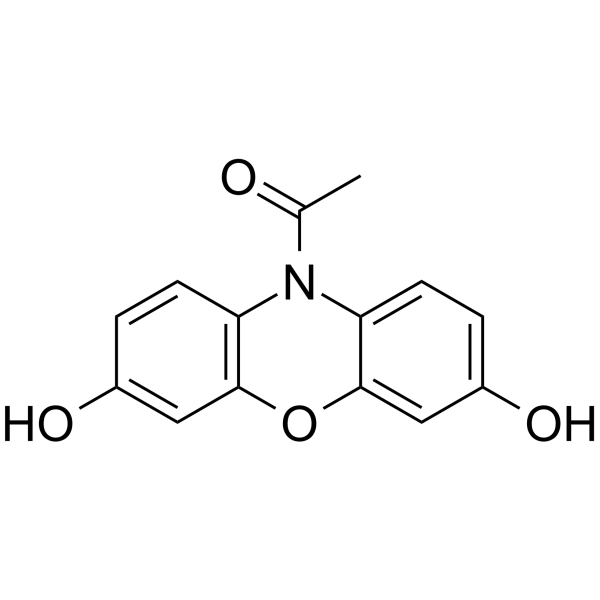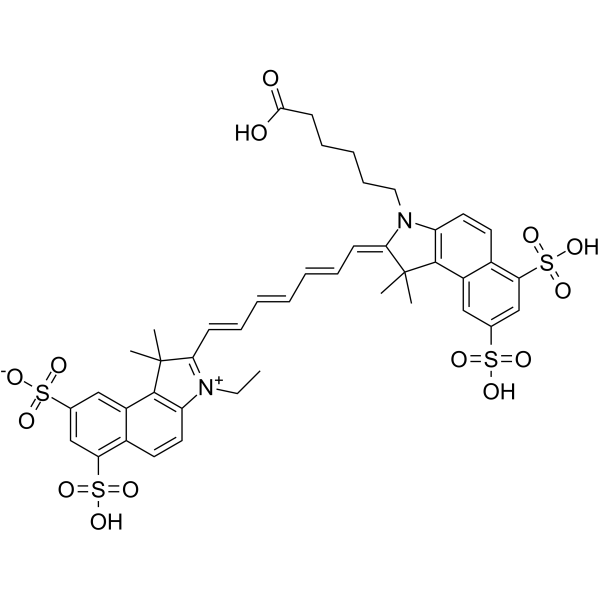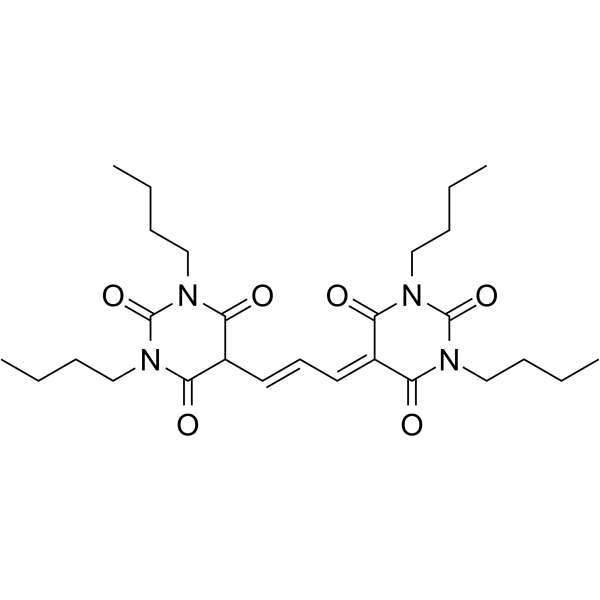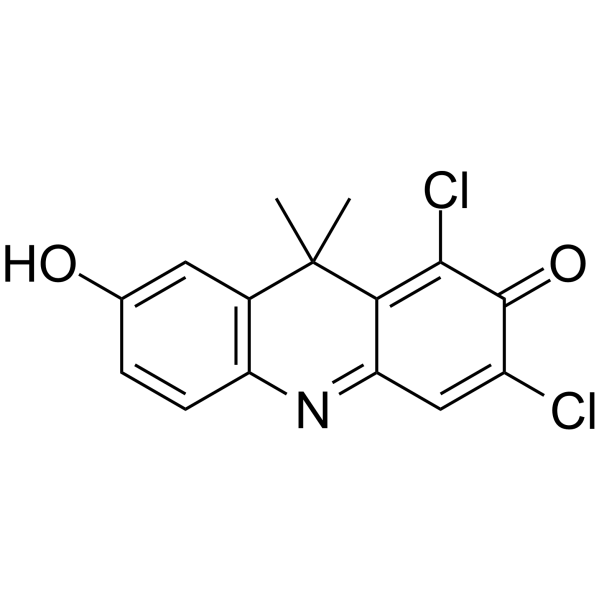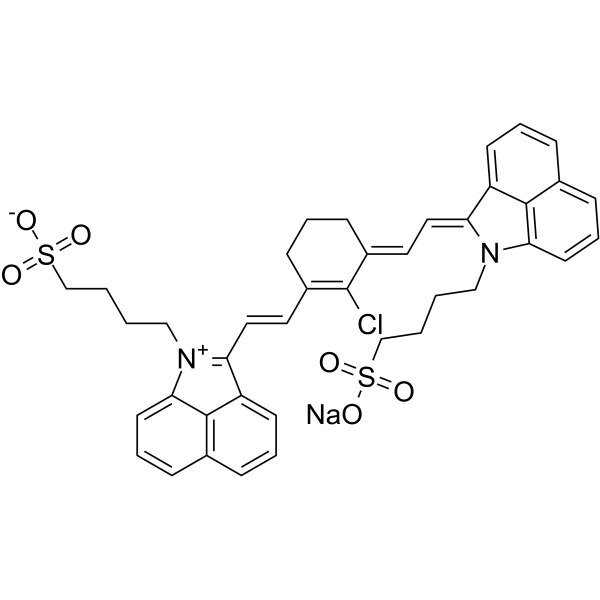荧光染料Dye Reagents Indo-1 AM;(Synonyms: Indo-1 Acetoxymethyl ester)
Indo-1 AM 是一种荧光 Ca2+ 指示剂 (λex=340 nm,λem=405/485 nm)。

Indo-1 AM Chemical Structure
CAS No. : 112926-02-0
| 规格 | 价格 | 是否有货 | |
|---|---|---|---|
| 1 mg | ¥6151 | 询问价格 货期 | |
* Please select Quantity before adding items.
| 生物活性 |
Indo-1 AM is a fluorescent Ca2+ indicator (λex=340 nm, λem=405/485 nm). |
|---|---|
| 体外研究 (In Vitro) |
Indo-1 AM is a fluorescent Ca2+ indicator with λex=340 nm and λem=405/485 nm[1]. In rabbit hearts that are exposed to Indo-1 AM, 72% of the dye is in the cytosol, and the remainder is associated with the mitochondria, microsomes and the nucleus[2]. MCE has not independently confirmed the accuracy of these methods. They are for reference only. |
| 分子量 |
1009.91 |
| Formula |
C47H51N3O22 |
| CAS 号 |
112926-02-0 |
| 运输条件 |
Room temperature in continental US; may vary elsewhere. |
| 储存方式 |
Please store the product under the recommended conditions in the Certificate of Analysis. |
| 参考文献 |
|
| Cell Assay [2] |
The cells are loaded with indo-I and fura-2 by exposure to the membrane-permeant forms, Indo-1 AM (indo-l-acetoxymethyl ester) and fura-2-acetoxymethyl ester, respectively. A mixture of 10 μL of 1 mM Indo-1 AM or fura-2/AM in dimethylsulfoxide (DMSO), 2.5 μL of 25% wt/wt Pluronic F-127 in DMSO, and 75 μL fetal calf serum (FCS) or newborn calf serum (NCS) is added to 2 mL Tyrode solution containing the cells and 40 μL FCS or NCS. Loading is achieved by gently shaking the cells for 15 to 30 min[2]. MCE has not independently confirmed the accuracy of these methods. They are for reference only. |
|---|---|
| 参考文献 |
|

